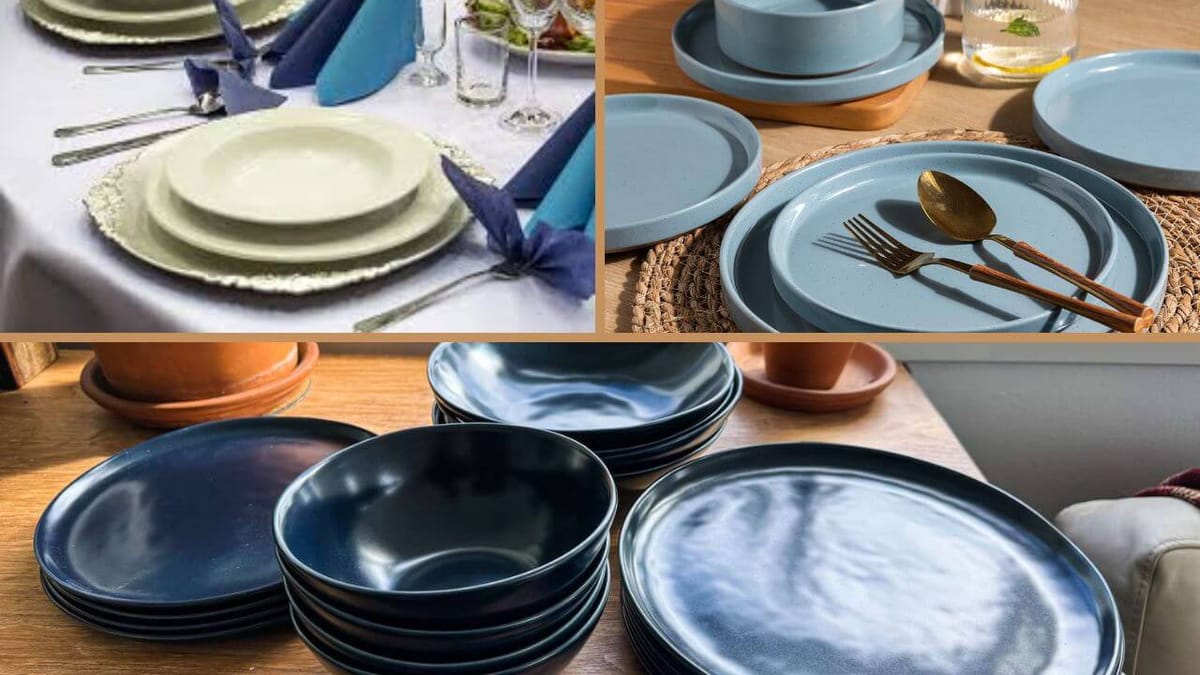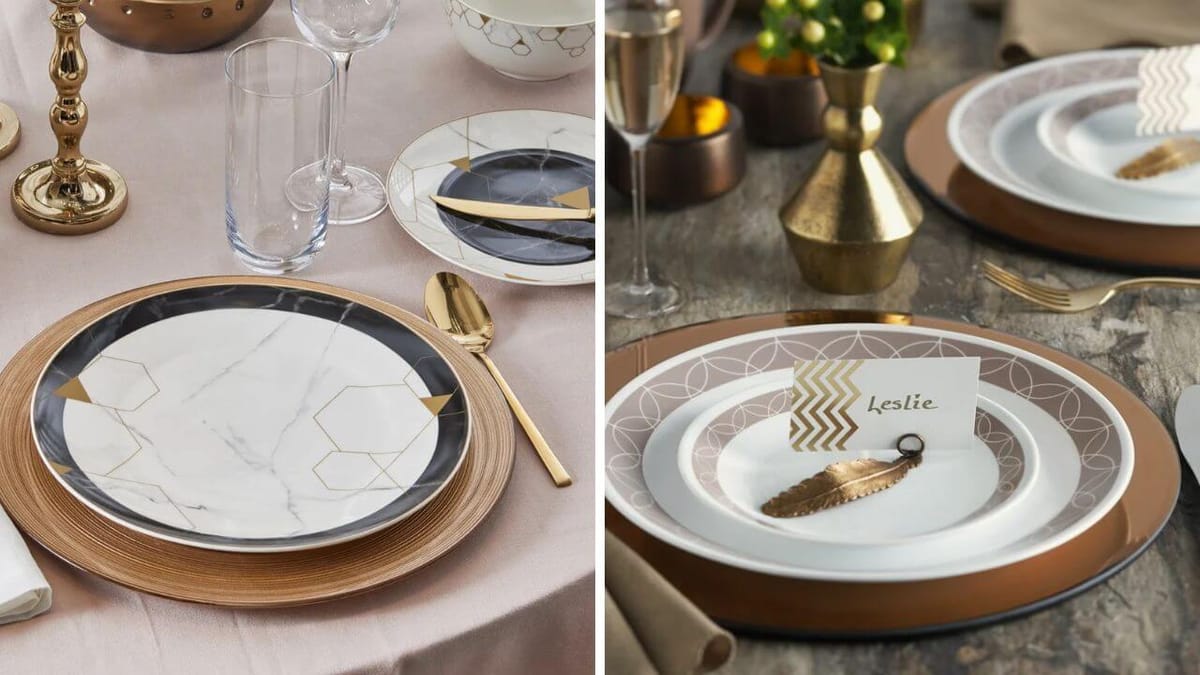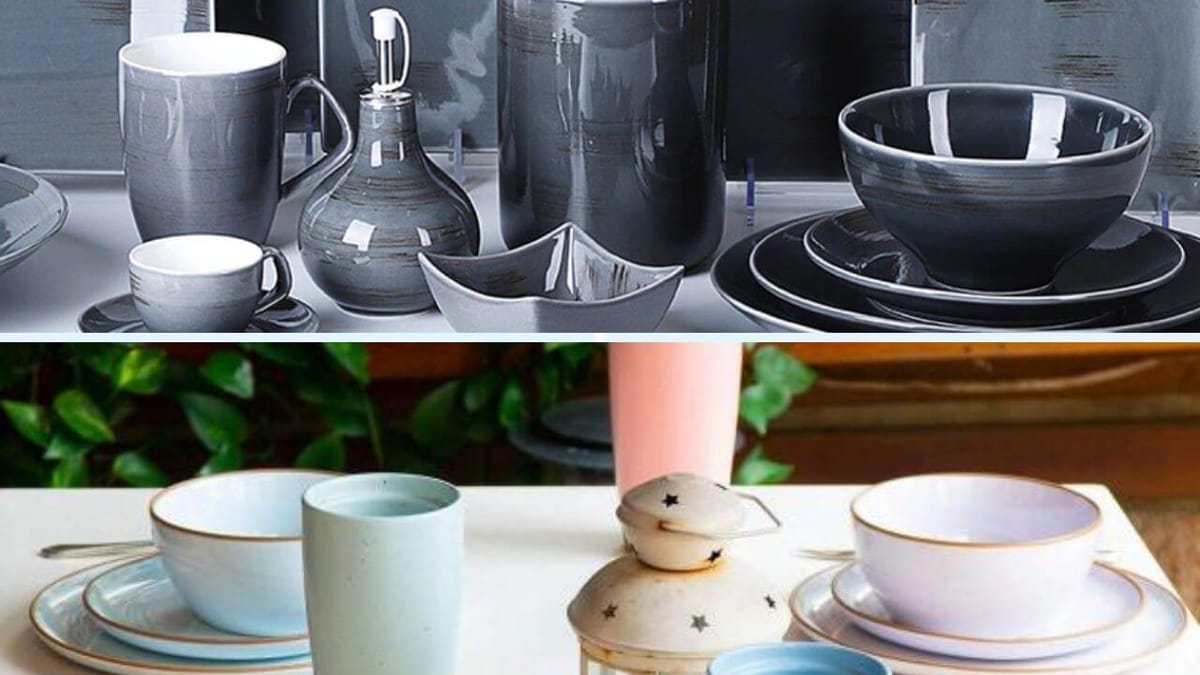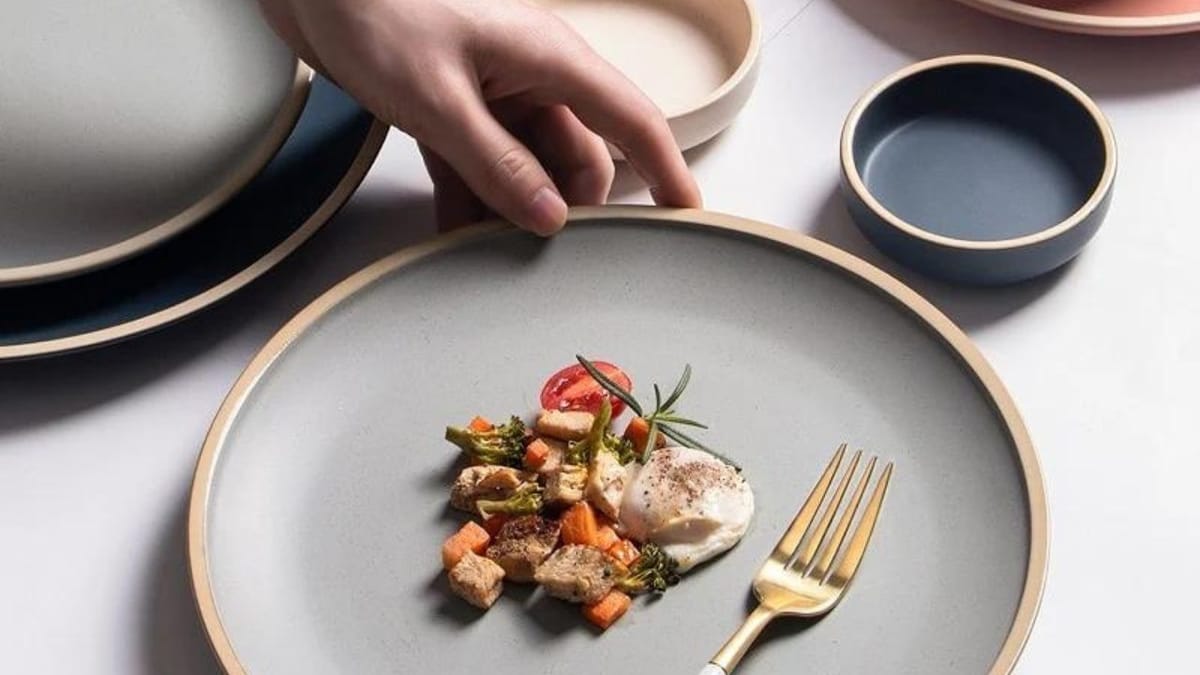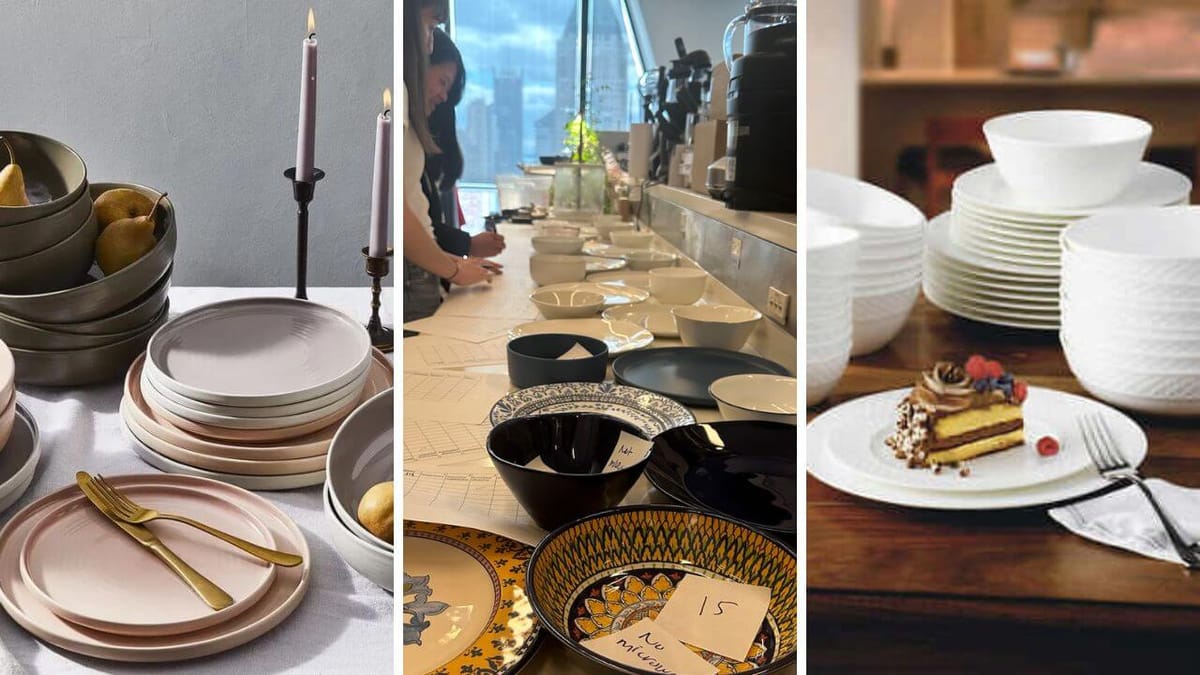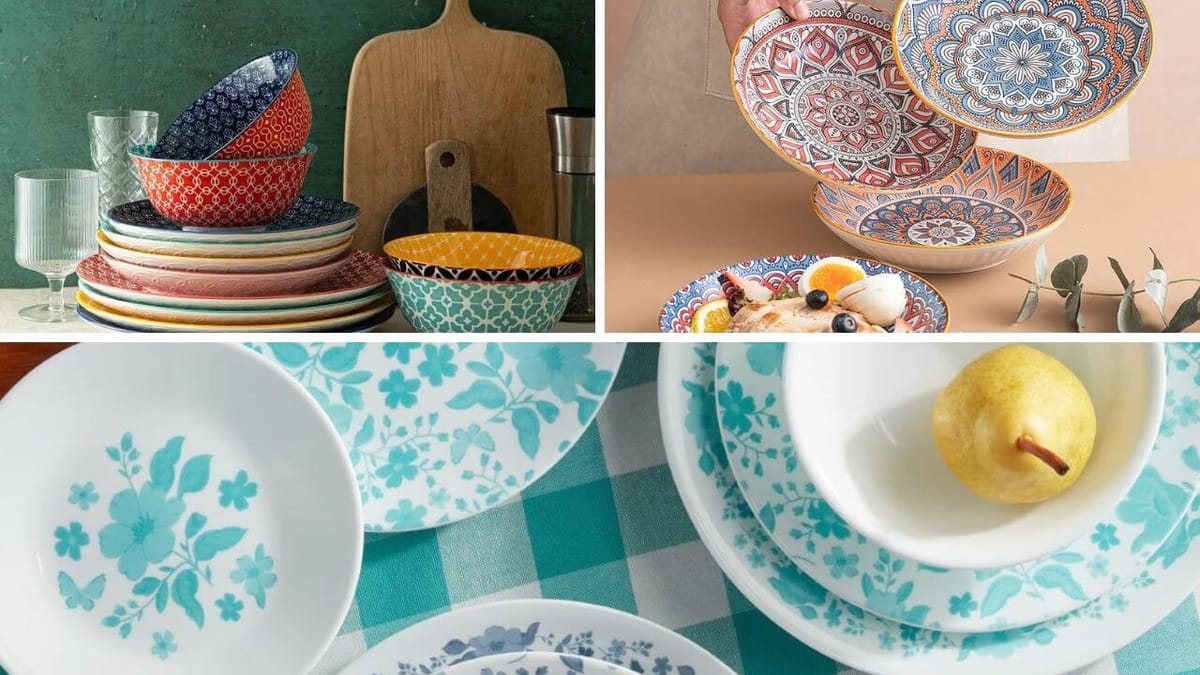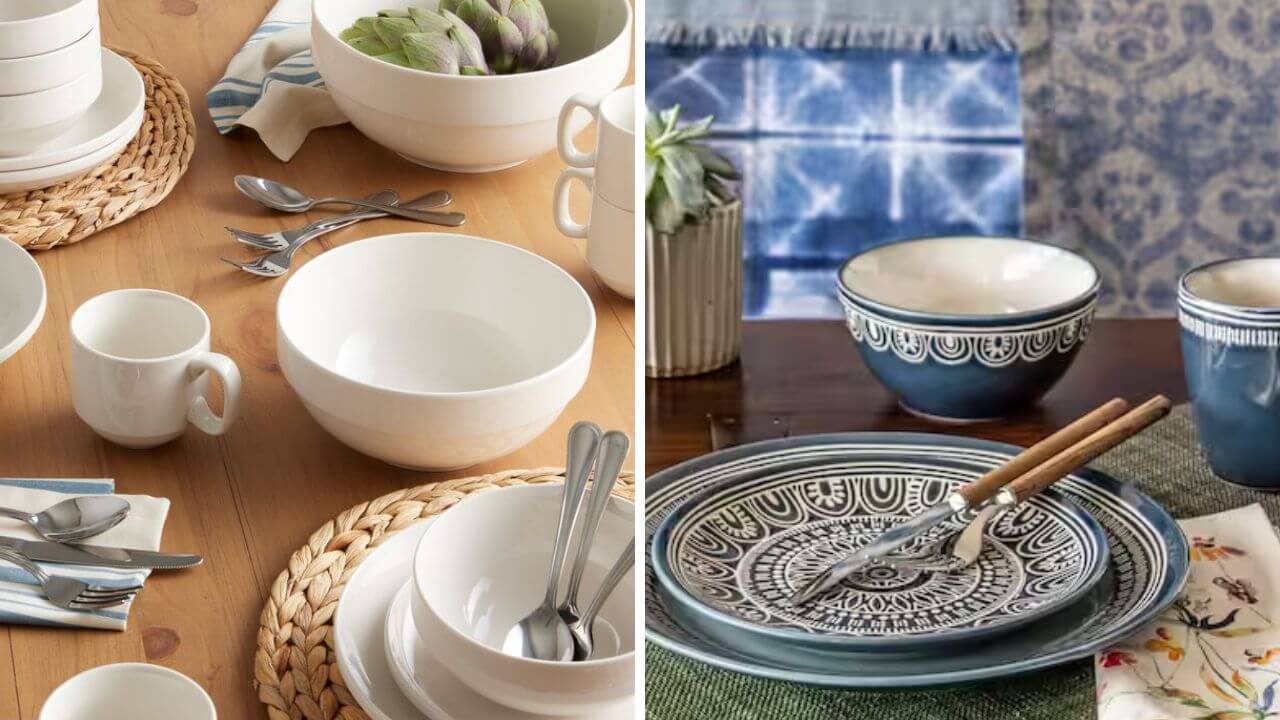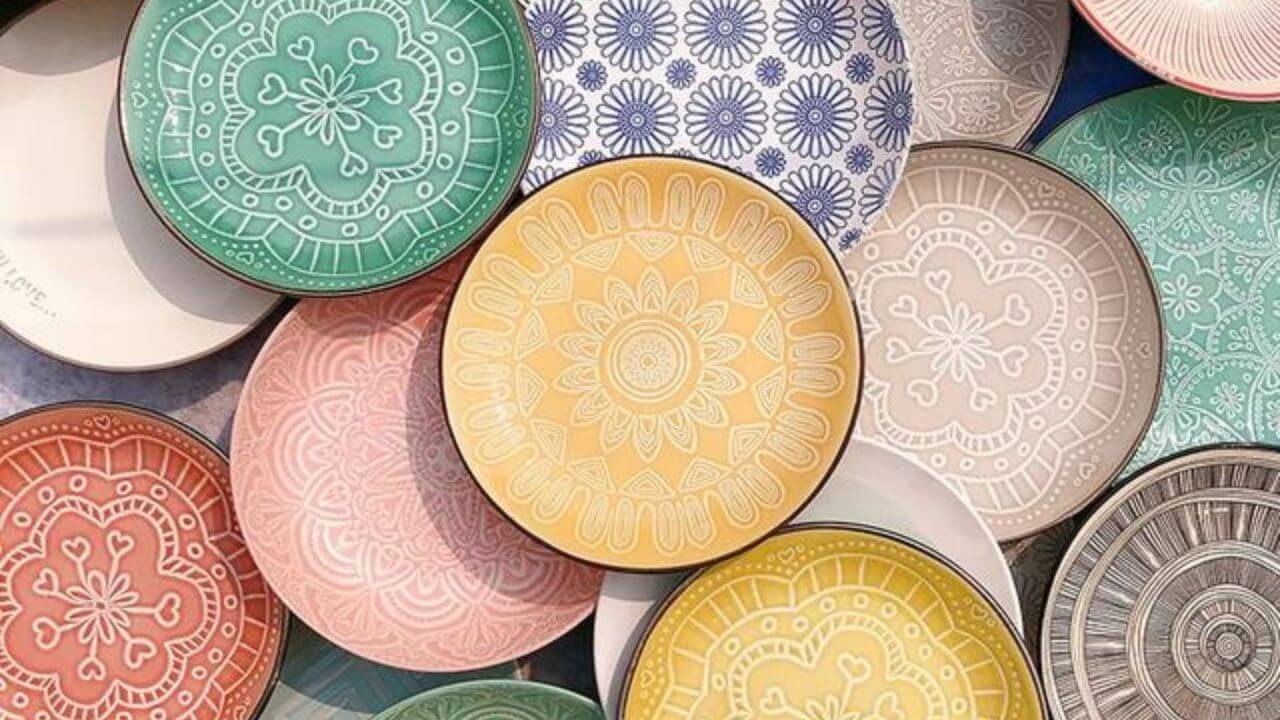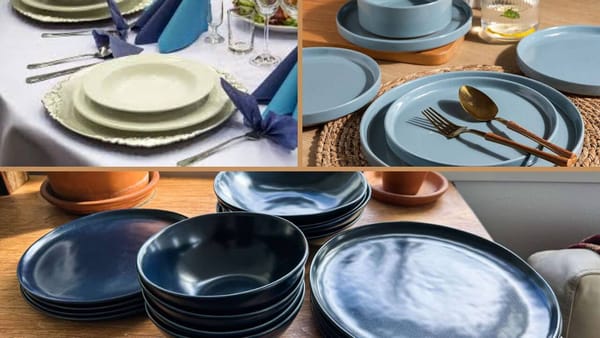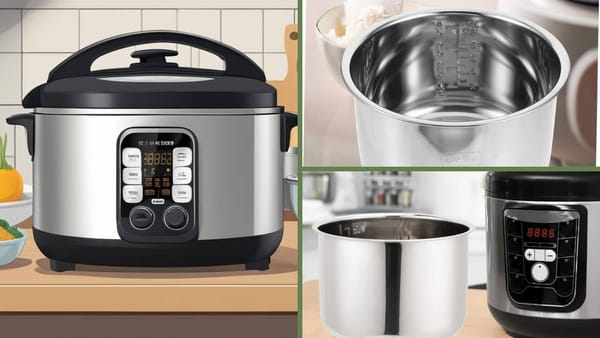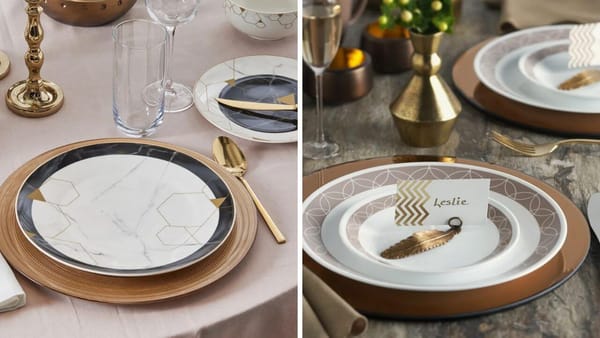Ceramic plates have long been a staple in kitchens and dining rooms around the world. Their aesthetic appeal and ability to withstand high temperatures make them a popular choice. However, like any material, ceramic plates come with their own set of drawbacks. So what are the cons of ceramic? In this article, we will look into the disadvantages of ceramic plates, providing you with a comprehensive understanding to help you make an informed decision.
Key Takeaways:
- Ceramic plates, like ceramic bowls, are prone to chipping and breaking, making them less durable than other materials.
- They can be expensive, especially when considering high-quality ceramic options.
- Ceramic plates may not be suitable for all types of food, particularly acidic foods that can cause stains and wear.
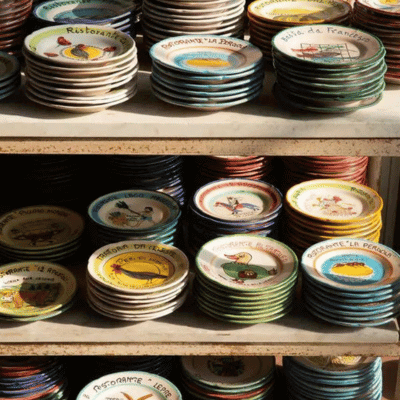
Prone to Chipping and Breaking
One of the most significant disadvantages of ceramic plates is their fragility. Ceramic plates are delicate and can easily chip or break if accidentally dropped. This is a common complaint among users who find themselves frequently replacing their ceramic dishes. Unlike steel plates or other types of durable materials, ceramic plates do not offer the same level of resilience.
The brittleness of ceramic plates means they require careful handling. Even a minor bump against a hard surface can result in a chip or crack. This fragility can be particularly problematic in households with children or in busy kitchens where plates are constantly being moved and used. The need for careful handling can be a hassle, making ceramic plates less practical for everyday use.
High Cost
Ceramic plates, unlike ceramic pans, can be quite expensive, especially when compared to other materials like plastic or aluminum. High-quality ceramic plates, which are often more durable and aesthetically pleasing, come with a higher price tag. This cost can add up quickly, particularly if you need to replace plates frequently due to chipping or breaking.
The cost of ceramic plates is not just limited to the initial purchase. Over time, the need for replacements can make ceramic plates a costly investment. For those on a budget, the high cost of ceramic plates can be a significant drawback, making other materials a more attractive option.
Unsuitable for Acidic Foods
Ceramic plates may not be the best choice for serving acidic foods. Acidic foods can cause stains and wear on ceramic surfaces, diminishing their aesthetic appeal over time. This is a key factor to consider, especially if you frequently serve dishes that contain acidic ingredients like tomatoes or citrus fruits.
The susceptibility to staining means that ceramic plates require more careful maintenance. Regular use of acidic foods can lead to permanent discoloration, making your plates look worn and less appealing. This can be a significant disadvantage for those who value the visual appeal of their dinnerware.
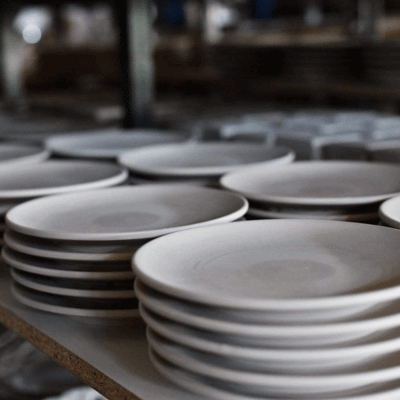
Heavy Weight
Ceramic plates are generally heavier than plates made from other materials like plastic or aluminum. This added weight can make them cumbersome to handle, especially when carrying multiple plates at once. For individuals with limited strength or mobility, the weight of ceramic plates can be a significant drawback.
The heavy weight of ceramic plates also makes them less convenient for certain situations, such as outdoor dining or picnics. In these scenarios, lighter materials like plastic or aluminum are often preferred for their ease of transport and handling. The weight of ceramic plates can be a limiting factor, reducing their versatility.
Not Dishwasher-safe
While some ceramic plates are labeled as dishwasher safe, many are not. The high heat and harsh detergents used in dishwashers can cause damage to ceramic plates, leading to cracks, chips, or fading of the glaze. This means that ceramic plates often require hand washing, which can be time-consuming and inconvenient.
For those who rely on the convenience of a dishwasher, the need to hand wash ceramic plates can be a significant disadvantage. The extra effort required for cleaning can make ceramic plates less appealing, especially for busy households where time is a precious commodity.
Susceptible to Thermal Shock
Ceramic plates are susceptible to thermal shock, which occurs when there is a sudden change in temperature. For example, placing a hot ceramic plate directly into cold water can cause it to crack or shatter. This sensitivity to temperature changes can limit the versatility of ceramic plates, making them less suitable for certain cooking and serving situations.
The risk of thermal shock means that ceramic plates require careful handling when exposed to different temperatures. This can be a hassle, particularly in busy kitchens where plates are frequently moved between hot and cold environments. The need for careful temperature management can be a significant drawback for ceramic plates.
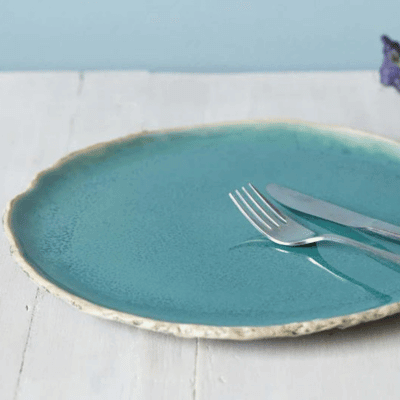
Limited Durability
While ceramic plates can withstand high temperatures, they are not as durable as other materials like steel or plastic. The brittleness of ceramic means that it is more prone to wear and tear over time. This limited durability can be a significant disadvantage, especially for those who need plates that can withstand heavy use.
The limited durability of a ceramic plate, like a ceramic pan, means that it may need to be replaced more frequently than plates made from other materials. This can add to the overall cost and inconvenience, making ceramic plates a less practical choice for some users. The need for frequent replacements can be a significant drawback, particularly for those who value long-lasting dinnerware.
Staining and Discoloration
Ceramic plates are prone to staining and discoloration, particularly when used with certain foods and beverages. Coffee, tea, and acidic foods can leave permanent stains on ceramic surfaces, diminishing their aesthetic appeal. This susceptibility to staining means that ceramic plates require more careful maintenance to keep them looking their best.
The need for careful maintenance can be a significant drawback for ceramic plates. Regular use of certain foods and beverages can lead to permanent discoloration, making your plates look worn and less appealing. This can be a significant disadvantage for those who value the visual appeal of their dinnerware.
Not Suitable for All Cooking Methods
Ceramic plates are not suitable for all cooking methods. While they can withstand high temperatures, they are not ideal for use in certain cooking techniques, like broiling or grilling. The brittleness of ceramic means that it can crack or shatter under extreme heat, limiting its versatility in the kitchen.
The limited suitability for certain cooking methods can be a significant drawback for ceramic plates. For those who enjoy a variety of cooking techniques, the need for different types of cookware can be inconvenient. The limited versatility of ceramic dinnerware can be a significant disadvantage, particularly for those who value multi-functional kitchenware.
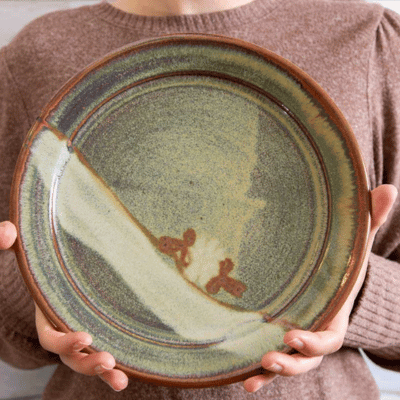
Environmental Impact
The production of ceramic plates can have a significant environmental impact. The process of mining and processing the raw materials used in ceramic production can result in environmental degradation. Additionally, the energy-intensive firing process used to create ceramic plates can contribute to greenhouse gas emissions.
The environmental impact of ceramic plates can be a significant drawback for those who are environmentally conscious. The need for sustainable and eco-friendly dinnerware options can make ceramic plates less appealing. The environmental considerations can be a significant disadvantage, particularly for those who value sustainability.
Limited Design Options
While ceramic plates are available in a wide range of designs, they are not as versatile as other materials like plastic or metal. The limitations of the ceramic material mean that certain design features, such as intricate patterns or shapes, may not be possible. This can limit the aesthetic appeal of ceramic plates for those who value unique and creative dinnerware designs.
The limited design options can be a significant drawback for ceramic plates. For those who enjoy a variety of dinnerware styles, the need for different materials to achieve certain designs can be inconvenient. The limited versatility of ceramic plates can be a significant disadvantage, particularly for those who value creative and unique dinnerware.
Summary
Ceramic plates, while aesthetically pleasing and capable of withstanding high temperatures, come with several disadvantages. They are prone to chipping and breaking, can be expensive, and may not be suitable for all types of food. Additionally, ceramic cookware, with its heavy weight, susceptibility to thermal shock, and limited durability, can make them less practical for everyday use.
The need for careful maintenance to avoid staining and discoloration, as well as their limited suitability for certain cooking methods, further adds to their drawbacks. Environmental impact and limited design options also contribute to the disadvantages of ceramic plates. By understanding these drawbacks, you can make an informed decision about whether ceramic plates are the right choice for your needs.

FAQ
Are ceramic plates microwave-safe?
Most ceramic plates are microwave safe, but it's important to check the manufacturer's instructions. Some ceramic plates may contain materials or glazes that are not suitable for microwave use.
How can I prevent my ceramic plates from chipping?
To prevent chipping, handle ceramic plates with care, avoid stacking them too tightly, and use protective padding when storing them. Additionally, avoid exposing them to sudden temperature changes.
Can ceramic plates be used in the oven?
Ceramic plates can generally be used in the oven, but it's important to check the manufacturer's instructions. The ceramic coating on some ceramic plates may not be suitable for sustained high oven temperatures and could crack or shatter.
Click here to see our article on the best ceramic dinnerware sets!
